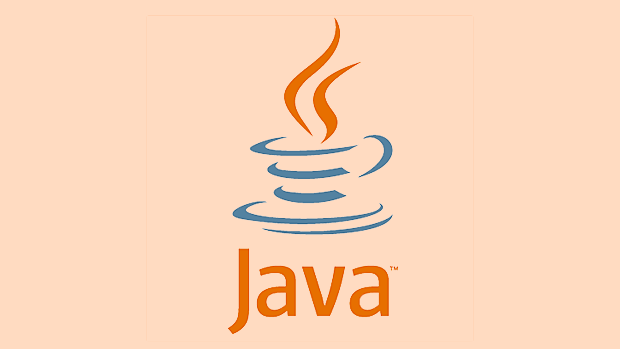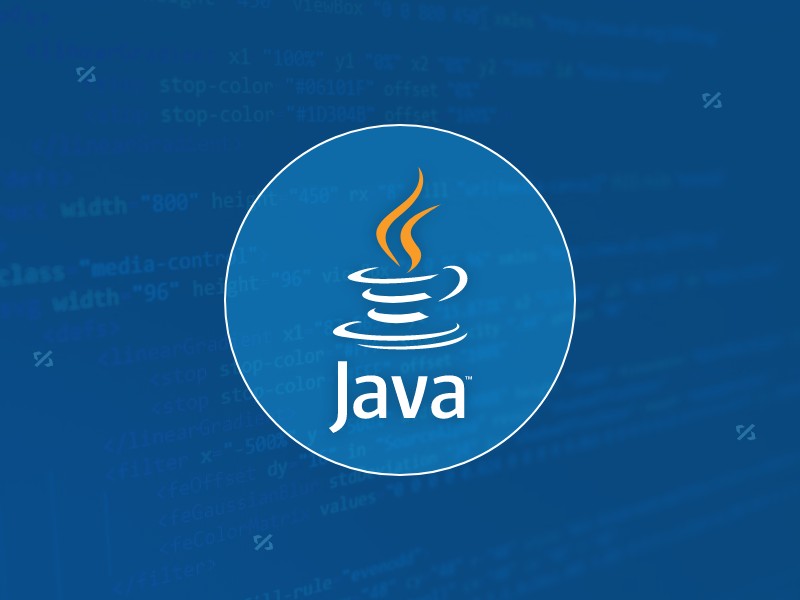Exploring Different Synchronization Mechanisms in Java
Jul 04, 2025 am 02:53 AMJava provides multiple synchronization tools for thread safety. 1. synchronized blocks ensure mutual exclusion by locking methods or specific code sections. 2. ReentrantLock offers advanced control, including tryLock and fairness policies. 3. Condition variables allow threads to wait for state changes. 4. Atomic variables handle simple state updates efficiently without locks. Choosing the right mechanism depends on the use case and thread coordination needs.

When you're working with multi-threaded Java applications, handling synchronization correctly is crucial. Without it, threads can interfere with each other in unpredictable ways — like reading stale data or corrupting shared resources. Java provides several tools for synchronization, and knowing which one to use (and when) makes a big difference in performance and clarity.

Understanding synchronized Blocks
The most straightforward way to handle thread safety in Java is by using the synchronized keyword. When applied to a method or block, it ensures that only one thread can execute that code at a time for a given object.

- If you synchronize on a method like
public synchronized void add(), the entire method is locked per instance. - For finer control, use synchronized blocks:
synchronized(lockObject) { ... }. This lets you lock only the critical section, not the whole method.
One thing to watch out for: if multiple unrelated operations are protected by the same lock, they’ll block each other unnecessarily. That’s why choosing the right lock object matters.
Leveraging ReentrantLock for More Control
While synchronized works well for basic cases, sometimes you need more flexibility. That's where ReentrantLock comes in — it gives you explicit control over locking behavior.

- You can try to acquire a lock with a timeout (
tryLock()), which helps avoid deadlocks. - It supports fairness — meaning threads can be served in the order they requested the lock.
- Locks must be manually released in a
finallyblock, or you risk leaving them held indefinitely.
This level of control is useful in high-contention scenarios or when you need to integrate with condition variables (which we'll touch on next).
Using Condition Variables for Coordination
Sometimes just mutual exclusion isn’t enough — you also need threads to wait for certain states before proceeding. That’s what Condition objects are for, typically used with ReentrantLock.
- A thread can call
await()to pause until another thread signals viasignal()orsignalAll(). - Multiple conditions can exist per lock, allowing more precise signaling logic than
wait()andnotify().
For example, imagine a bounded queue where a producer waits when the queue is full and a consumer waits when it’s empty. Each can have its own condition, making coordination much cleaner.
Considering Atomic Variables for Simpler Cases
If your use case involves simple state changes — like incrementing a counter or updating a reference — you might not need full locks at all. Java’s atomic classes (AtomicInteger, AtomicReference, etc.) offer thread-safe operations without blocking.
- They rely on CAS (Compare-and-Swap) operations under the hood, which are often faster than acquiring locks.
- They’re best suited for low to moderate contention scenarios.
- Complex operations (like compound actions) still require external synchronization.
So if you're doing something like tracking hits on a web page, an AtomicLong could be perfect — no need to go full concurrency framework on it.
That's about it. Choosing the right synchronization mechanism depends on what you're trying to do and how much coordination between threads you actually need. None of these tools are universally better — they each serve different purposes and trade-offs.
The above is the detailed content of Exploring Different Synchronization Mechanisms in Java. For more information, please follow other related articles on the PHP Chinese website!

Hot AI Tools

Undress AI Tool
Undress images for free

Undresser.AI Undress
AI-powered app for creating realistic nude photos

AI Clothes Remover
Online AI tool for removing clothes from photos.

Clothoff.io
AI clothes remover

Video Face Swap
Swap faces in any video effortlessly with our completely free AI face swap tool!

Hot Article

Hot Tools

Notepad++7.3.1
Easy-to-use and free code editor

SublimeText3 Chinese version
Chinese version, very easy to use

Zend Studio 13.0.1
Powerful PHP integrated development environment

Dreamweaver CS6
Visual web development tools

SublimeText3 Mac version
God-level code editing software (SublimeText3)

Hot Topics
 Applying Semantic Structure with article, section, and aside in HTML
Jul 05, 2025 am 02:03 AM
Applying Semantic Structure with article, section, and aside in HTML
Jul 05, 2025 am 02:03 AM
The rational use of semantic tags in HTML can improve page structure clarity, accessibility and SEO effects. 1. Used for independent content blocks, such as blog posts or comments, it must be self-contained; 2. Used for classification related content, usually including titles, and is suitable for different modules of the page; 3. Used for auxiliary information related to the main content but not core, such as sidebar recommendations or author profiles. In actual development, labels should be combined and other, avoid excessive nesting, keep the structure simple, and verify the rationality of the structure through developer tools.
 The requested operation requires elevation Windows
Jul 04, 2025 am 02:58 AM
The requested operation requires elevation Windows
Jul 04, 2025 am 02:58 AM
When you encounter the prompt "This operation requires escalation of permissions", it means that you need administrator permissions to continue. Solutions include: 1. Right-click the "Run as Administrator" program or set the shortcut to always run as an administrator; 2. Check whether the current account is an administrator account, if not, switch or request administrator assistance; 3. Use administrator permissions to open a command prompt or PowerShell to execute relevant commands; 4. Bypass the restrictions by obtaining file ownership or modifying the registry when necessary, but such operations need to be cautious and fully understand the risks. Confirm permission identity and try the above methods usually solve the problem.
 Differences Between Callable and Runnable in Java
Jul 04, 2025 am 02:50 AM
Differences Between Callable and Runnable in Java
Jul 04, 2025 am 02:50 AM
There are three main differences between Callable and Runnable in Java. First, the callable method can return the result, suitable for tasks that need to return values, such as Callable; while the run() method of Runnable has no return value, suitable for tasks that do not need to return, such as logging. Second, Callable allows to throw checked exceptions to facilitate error transmission; while Runnable must handle exceptions internally. Third, Runnable can be directly passed to Thread or ExecutorService, while Callable can only be submitted to ExecutorService and returns the Future object to
 Exploring Different Synchronization Mechanisms in Java
Jul 04, 2025 am 02:53 AM
Exploring Different Synchronization Mechanisms in Java
Jul 04, 2025 am 02:53 AM
Javaprovidesmultiplesynchronizationtoolsforthreadsafety.1.synchronizedblocksensuremutualexclusionbylockingmethodsorspecificcodesections.2.ReentrantLockoffersadvancedcontrol,includingtryLockandfairnesspolicies.3.Conditionvariablesallowthreadstowaitfor
 How Java ClassLoaders Work Internally
Jul 06, 2025 am 02:53 AM
How Java ClassLoaders Work Internally
Jul 06, 2025 am 02:53 AM
Java's class loading mechanism is implemented through ClassLoader, and its core workflow is divided into three stages: loading, linking and initialization. During the loading phase, ClassLoader dynamically reads the bytecode of the class and creates Class objects; links include verifying the correctness of the class, allocating memory to static variables, and parsing symbol references; initialization performs static code blocks and static variable assignments. Class loading adopts the parent delegation model, and prioritizes the parent class loader to find classes, and try Bootstrap, Extension, and ApplicationClassLoader in turn to ensure that the core class library is safe and avoids duplicate loading. Developers can customize ClassLoader, such as URLClassL
 Handling Common Java Exceptions Effectively
Jul 05, 2025 am 02:35 AM
Handling Common Java Exceptions Effectively
Jul 05, 2025 am 02:35 AM
The key to Java exception handling is to distinguish between checked and unchecked exceptions and use try-catch, finally and logging reasonably. 1. Checked exceptions such as IOException need to be forced to handle, which is suitable for expected external problems; 2. Unchecked exceptions such as NullPointerException are usually caused by program logic errors and are runtime errors; 3. When catching exceptions, they should be specific and clear to avoid general capture of Exception; 4. It is recommended to use try-with-resources to automatically close resources to reduce manual cleaning of code; 5. In exception handling, detailed information should be recorded in combination with log frameworks to facilitate later
 Asynchronous Programming Techniques in Modern Java
Jul 07, 2025 am 02:24 AM
Asynchronous Programming Techniques in Modern Java
Jul 07, 2025 am 02:24 AM
Java supports asynchronous programming including the use of CompletableFuture, responsive streams (such as ProjectReactor), and virtual threads in Java19. 1.CompletableFuture improves code readability and maintenance through chain calls, and supports task orchestration and exception handling; 2. ProjectReactor provides Mono and Flux types to implement responsive programming, with backpressure mechanism and rich operators; 3. Virtual threads reduce concurrency costs, are suitable for I/O-intensive tasks, and are lighter and easier to expand than traditional platform threads. Each method has applicable scenarios, and appropriate tools should be selected according to your needs and mixed models should be avoided to maintain simplicity
 What is the purpose of the `static` keyword in Java?
Jul 05, 2025 am 02:36 AM
What is the purpose of the `static` keyword in Java?
Jul 05, 2025 am 02:36 AM
Static keywords are used in Java to create variables and methods that belong to the class itself, rather than instances of the class. 1. Static variables are shared by instances of all classes and are suitable for storing data shared by all objects, such as schoolName in the Student class. 2. Static methods belong to classes and do not depend on objects. They are often used in tool functions, such as Math.sqrt(), and can only access other static members. 3. Static code blocks are used to perform initialization operations when class loading, such as loading libraries or setting logs. 4. Static inner classes can be instantiated independently of the external class, but non-static members of the external class cannot be accessed. Rational use of static can effectively manage class-level resources and behaviors.






